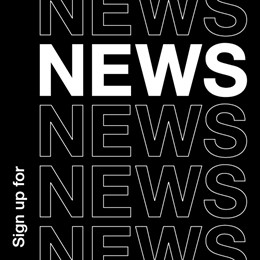Eye-opening experiences

Transform editor Jack Cousins sits down with renowned experience designer Nathalie van Sasse van Ysselt. Fresh from her talk at OFFF festival in Barcelona, the pair discuss her career, what defines a strong brand experience in the 2020s and the potential impact of AI on the discipline.
You’ve had a very interesting career that’s spanned over many disciplines, such as founding an art gallery in Berlin, mentoring and also working for and alongside many interesting brands. How have all of these roles influenced the way you see brand experiences as a discipline?
I believe the most successful brand experiences happen when a brand focuses on its identity or essence, rather than just pushing a product. Of course, there are times when product needs to be sold, but when a brand taps into its deeper purpose there's potential to create something more emotional and resonant.
If the focus is solely on the product, it tends to be more transactional and less meaningful. But when brands aim to tell their story, share their culture or open up a broader world around them, that's where we can do truly impactful work.
From a business standpoint, this approach may not be an immediate conversion but it's about building long term brand affinity, awareness and cultural relevance. It’s a longer-term investment.
Ultimately, it's about "eventising" the brand — creating moments that embody its story and values into the digital and physical space. Some brands naturally lend themselves to this because they’re more narrative-driven, which opens up more creative opportunities.

[Credit: Tamschick Media + Space GmbH and MAYBELLINE New York]
How has that definition of a powerful brand experience changed over the past decade?
Things have changed radically. Instagram, in particular, really pushed brands to think about how they show up and interact with audiences. While that’s evolving now, social media has definitely played a major role in shaping the rise of brand experiences.
We've seen a huge increase in pop-ups and major activations at events like the Super Bowl, Coachella and CES. Brands now recognise the value of creating memorable, shareable experiences. Meta House is a great example, and Google typically does large-scale buildouts at events. These aren't just displays, they're fully immersive experiences that help define a brand.
When I first started in this space, you often had to convince brands that experiential work was worth the investment. Now, there’s a much greater understanding and appreciation of the impact it can have.

[Credit: Moment Factory & Cipriani]
Tell me about working with Sphere Entertainment and launching their creative in-house studio. How difficult was that to get off the ground?
Building teams was challenging before the Sphere opened, mainly because no one really knew what it was. That made it hard to attract talent. But as soon as it launched, that completely changed and interest skyrocketed.
With projects like the Sphere – or really any new multimedia experience – you’re working in a space where there aren't many true experts yet. It's still evolving, so we look for multi-disciplinary talent. Some come from theatre, others from art direction in commercials, VR or projection mapping. And often, those unexpected skill sets translate beautifully into spatial design or immersive tech.
I like to think of them as Swiss Army knife creatives. It’s that versatility – both technically and creatively – that really drives these projects forward.

[Credit: Tamschick Media + Space GmbH and Lavazza]
What’s your favourite brand experience you created as part of that role?
The F1 project was incredible and definitely one of the most fun. What made it so exciting was the real, direct interaction with the environment. We were able to treat the space like a live, reactive environment rather than just a static billboard, which made all the difference.
In terms of the best audience response, that project and the Super Bowl one happened very close to each other, so I think they were both very amplified and hyped, meaning they got a lot of great feedback and generated a lot of authentic social interaction with fans beyond the live event.

[Credit: Moment Factory & Cipriani]
Looking to the future, how do you see AI evolving the world of brand experiences?
I think with AI, there are two sides. Some brands just want to stay surface-level and say, “Let’s do something with AI,” because it’s trending. But ideally, you tap into the brand’s DNA because it’s much deeper. That’s where it becomes truly engaging.
AI can be powerful, but it has to be used in a way that aligns with the brand, not just added on as a novelty. It needs to serve a purpose within the brand’s story, values and product.

[Credit: Moment Factory & Cipriani]
What’s the last brand experience that made you stop and think, “I wish I’d created that”?
Rather naming one project, I’d like to highlight creative approaches I think are exemplary. I think any kind of brand x artist collab works really well. Pharrell can make music, fashion and even Lego, for example. And experientially, when a brand really taps into its essence as the narrative driver rather than seeing an experience as just a marketing tool. Bureau Betak designs really immersive, artful events or even the last campaign Jacquemus did was so pleasantly disruptive and unexpected. As a pinnacle, I think the Olympic Games ceremonies are probably the most cultural defining articulation a brand brings to the world — it drives engagement and wonder, builds culture through collaborating with local creators and becomes a global icon.
This article was taken from Transform magazine Q3, 2025. You can subscribe to the print edition here.













